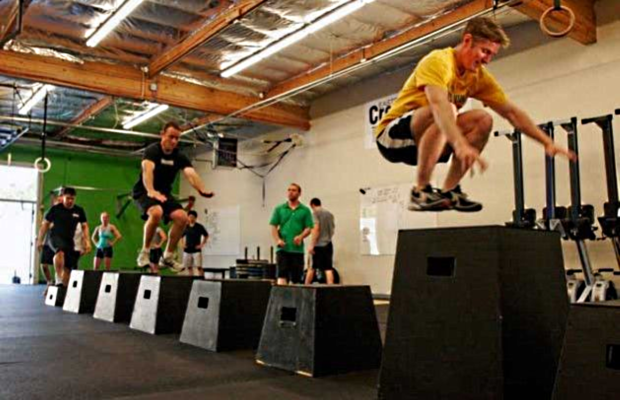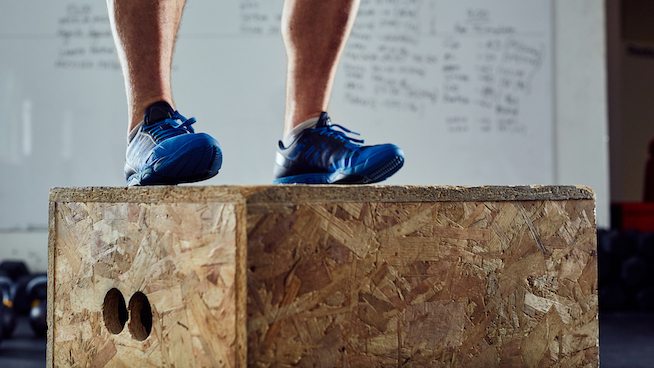The 10 Best Plyometric Exercises for Athletes
Stack Magazine | American Football | 11/02/2017
By Andy Meyers
Even today in 2024 Plyometric training is a great way for athletes to build explosive power. Performing plyometrics one to three times a week can increase your vertical jump and improve your speed and strength. The gains athletes make from plyometric training can directly translate to better performance on the field.
In order for an athlete to realize these benefits, however, they need to understand what plyometrics are—and are not. A lot of people nowadays are doing plyometrics all wrong—and putting themselves at a greater risk of injury by doing so. Just like in sports, structured learning and proper guidance are key to mastering any skill. Whether it’s refining your athletic training or improving your academic performance, having expert support can make a significant difference. If you’re balancing workouts and coursework, finding time for assignments can be tough. Fortunately, you can get homework at an affordable price, allowing you to focus on both your training and academic success without compromise.
Some basic plyo no-nos: Plyometrics are not cardio. They are not meant to be performed in a fast-paced circuit. They’re definitely not Burpees. They’re not a bunch of moves you should do over and over until you’re winded and panting because some exercise video told you to. (Not that we’re naming names, P90X “Plyometrics.” Ok, we are.)
What plyometrics are meant to do is teach you to exert maximum force in minimum time. To achieve this, each exercise must be performed quickly with maximum power and speed. A good amount of work per exercise is to perform 3 to 8 powerful and clean reps for 3 to 6 sets. The exact numbers depend on where you are in your training and which exercise you are doing.
Here are 10 highly effective plyometric exercises you can incorporate into your workout program and reap the benefits.
1. Front Box Jump
The Front Box Jump is one of the most-used plyometric exercises because it is very effective at increasing one’s vertical jump. It strengthens your quadriceps and glute muscles, which are essential for jumping.
- Place a plyo box 6 inches in front of you.
- Get into a squat position with your feet about shoulder-width apart.
- Squat and explode up using your entire body, including your arms.
- Land softy on the box on the balls of your feet.
- Step down, reset yourself and repeat.
- You can either increase box height or add weight via weighted vest, barbell or dumbbells to increase the difficulty.
Sets/Reps: 3×10
2. Lateral Box Jump
The Lateral Box Jump requires the muscles to contract in a slightly different manner. This is beneficial, because in most cases athletes jump not just forward but also laterally when playing their sports.
3. Weighted Lateral Jumps
Similar to Lateral Box Jumps, this plyometric exercise builds lateral leaping ability and strength. It also strengthens the ankles and calf muscles. This movement focuses more on quick feet and agility.
- Place a barbell on the ground with a weighted plate on each side.
- Adjust the weighted plate size according to your jumping ability—the bigger the weight, the higher the bar.
- Stand about 6 inches to the side of the barbell.
- Hold a weighted plate or medicine ball over your head. Adjust the weight according to your ability.
- Bend your knees slightly with your feet close together.
- Hop over the bar and back continuously, staying light on your feet.
Sets/Reps: 3×15 (over and back counts as one rep)
4. Broad Jumps
Broad Jumps build true leg strength, because you don’t take a first step or get a running start. They require you to perform a deep Squat to propel yourself forward as far as you can, using your quadriceps and glute muscles.
- Use a surface that has some give to it.
- Get into a squat position with your feet shoulder-width apart facing an open space.
- Squat down deep and explode up, using your entire body to thrust yourself forward.
- Land softly on the ground and immediately transition into your next rep.
Sets/Reps: 3×15
5. Skater Jumps
Skater Jumps build lateral strength and power in the quadriceps and glute muscles. They also place the entire load on one leg, which helps with balance and reduces the tendency to favor the stronger leg during two-legged jumps.
- Get into a squat position with your feet close together and the majority of your weight on your right leg.
- Push off your right leg to the opposite side.
- Land softly on your left leg and move your right leg behind it like you were performing a Curtsy Lunge.
- Repeat on your left leg. That’s one rep.
Sets/Reps: 3×10
6. Scissor Jumps
This plyometric exercise is essentially a Jumping Lunge in place. Scissor Jumps increase adductor and glute muscle strength with the legs in a stretched position.
- Get into a standard lunge position, keeping your back straight and your knees and toes forward.
- Squat down and explode up, switching leg positions in mid-air.
- Land softly and immediately transition to your next jump.
- Perform the same movement, switching your leg position each time.
Sets/Reps: 3×10
7. Dot Drill
The Dot Drill increases foot speed and quickness. It also increases ankle and calf strength, like Weighted Lateral Jumps.
- Place a dot mat in front of you or mark five spots like dots on a dice.
- Start with your feet on the two corner dots at the front end of the mat.
- Hop slightly off the ground, bringing both your feet together on the middle dot.
- Without stopping, jump slightly and separate your feet so each foot lands on a corner dot at the far end of the mat.
- Repeat the movement in reverse. That’s one rep.
- Repeat 10 times.
- The second sequence is the same as the first, except once you reach the far end of the mat moving forward, turn around and repeat the movement going forward instead of in reverse.
- Perform that sequence 10 times.
- The third sequence requires you to hop to each dot on one leg.
- Start from the dot in the front right corner.
- On one leg, hop to the middle dot, then the far right dot, then the far left, then hop backwards to the middle dot, then to the front left, and back to the front right. That’s one rep. Repeat 10 times.
- Perform the same sequence on the other foot 10 times, and then 10 times using both feet close together.
8. Lateral Box Shuffles
These mimic Skater Jumps but they focus more on lateral foot speed and quickness than explosive strength.
- Place a plyo box to the side at about shin height.
- Stand on the box with your right leg. Keep your left foot on the floor about 6 inches away.
- Get into a squat position and lift your left foot up onto the box while simultaneously placing your right foot on the floor on the other side of the box.
Sets/Reps: 3×30
9. Barbell Squat Jumps
This exercise adds weight to normal Bodyweight Squat Jumps, making it more difficult. When you perform a normal jump, it seems much easier and you can jump higher by increasing your explosive strength and power. Do not add so much weight that you are unable to perform a good jump.
- Set up a free-weight squat rack, adding weight to the barbell that allows you to perform 10 repetitions.
- Lift the barbell off the rack and get into a squat position with your feet about shoulder-width apart.
- Squat down and explode up, jumping off the ground.
- Land softly and immediately transition into your next rep.
Sets/Reps: 3×10
10. BOSU Ball Burpees
Burpees have always been great full-body exercises. Adding a BOSU ball adds extra resistance and tests balance. The BOSU ball also requires more core strength, which is the center of all athletic movements. Football players can greatly benefit from this exercise, because they are constantly having to get up from the ground.
- Hold a BOSU ball in front of you with the flat side facing you.
- Get into a squat position with your feet shoulder-width apart.
- Drop down into a push-up position with the round part of the BOSU ball on the floor.
- Bring your knees up to your chest like you were performing a Double-Leg Mountain Climber.
- Explode up, jumping into the air with the BOSU ball above your head.
- Land softly on the ground and immediately transition into your next rep.
Sets/Reps: 3×10
Additional Rules for Success with Plyometrics
Take Proper Breaks
Rest is important whenever you are doing plyometrics, since you want to achieve max explosiveness on each rep. Be disciplined and take the full prescribed rest between sets, even if when they feel “easy.” And if a set leaves you fatigued, add on 30 seconds more to whatever recommended break is listed in your plyometric training plan. (If no time is listed, taking 1 minute rest between sets is a good starting point.) Allow your muscles to fully recover. Just because you’re not gasping for air doesn’t mean you’re not working hard.
Learn How to Land

Closeup of athlete doing box jump at the gym
Land softly when performing plyometrics.
Really. Sure you may be scoffing to yourself right now, “Know how to land? OF COURSE I know how to land. What idiot doesn’t?” You’d be surprised. Plenty of people don’t. For proof, Step into any gym and just listen for the guy going BOOM! on top of an 18-inch tall box, or watch for the person whose knees collapse inward when he hits the ground after a jump. These form fails aren’t just loud and unsightly, their dangerous. Here’s how to make sure you don’t put yourself at risk!
Be Strict About Technique
Keep your form clean and precise during every set of every plyometric exercise. Proper form ensures you’ll get the most out of each movement and decreases your risk of injury. Quality is always better than quantity.
Track Your Progress
Write down the number of reps and sets you perform in every workout, as well as any weight you may use. Make notes when something feels particularly easy, or conversely, if it makes you struggle. Over time, you should see that the resistance you’re able to use in the exercises is increasing, your jumps are gaining altitude, and the time it takes you to run from point A to point B is declining
Read the original article by Andy Meyers in Stack.com
Andrew Meyers- Andrew Meyers is a NASM-certified personal trainer at Youfit Health Club in Gilbert, Ariz. He specializes in long-distance running and weightlifting. He graduated with a bachelor’s degree in Athletic Training from Grand Canyon University, where he also ran cross country and track.
HEADLINES
-
Advertisement
-
Advertisement